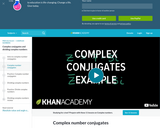
This 4-minute video lesson give an example of a complex conjugate.
- Subject:
- Algebra
- Mathematics
- Numbers and Operations
- Material Type:
- Lecture
- Provider:
- Khan Academy
- Provider Set:
- Khan Academy
- Author:
- Salman Khan
- Date Added:
- 10/11/2012

This 4-minute video lesson give an example of a complex conjugate.
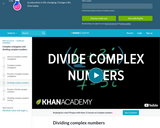
This 5- minute video lesson shows how to divide complex numbers.
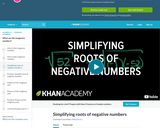
This 4-minute video lesson looks at the imaginary roots of negative numbers.
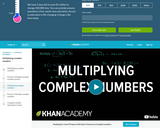
This 6-minute video lesson explains how to multiply complex numbers.
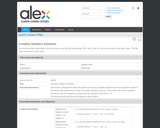
This lesson is designed to teach the students that some quadratic equations will have imaginary solutions. The lesson will examine the concept of complex numbers in terms i. The student will use the quadratic formula to solve the equations and write the the solutions in the form a +bi. This lesson results from the ALEX Resource Gap Project.
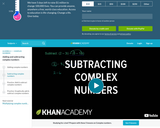
This 2-minute video lesson explains how to subtract complex numbers.

This seminar will show you how to identify, solve, and graph compound inequalities. You will learn the difference between the union and intersection of solutions, and you will also learn the importance of distinguishing between “and” and “or” when constructing compound inequalities.StandardsCC.2.2.HS.D.10Represent, solve, and interpret equations/inequalities and systems of equations/inequalities algebraically and graphically.

This resource illustrates how to solve a compound interest problem.

This task is preliminary to F-LE Compounding Interest with a 5% Interest Rate which further develops the relationship between e and compound interest.
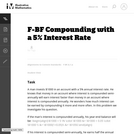
This task develops reasoning behind the general formula for balances under continuously compounded interest. While this task itself specifically addresses the standard (F-BF), building functions from a context, a auxiliary purpose is to introduce and motivate the number e, which plays a significant role in the (F-LE) domain of tasks.
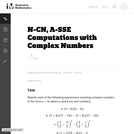
This task asks students to perform computations involving complex numbers using the given information.

This lesson centers around the How AI Works: Computer Vision video from the How AI Works video series. Watch this video first before exploring the lesson plan.
Students learn how computer vision works. They first look at optical illusions to identify the features of the drawing that their eyes noticed. Students watch a video explaining computer vision and how a computer "sees". They design an algorithm that uses a network to decide what number the seven segment display is displaying. Finally, students test their algorithm.
This lesson can be taught on its own, or as part of a 7-lesson sequence on How AI Works. Duration: 45 minutes
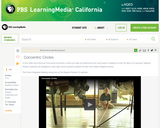
In this video segment you’ll discover how using concentric circles can help you determine how much paint is needed to cover the deck of a carousel.

This concept-building activity contains a set of sequenced simulations for investigating how atoms can be excited to give off radiation (photons). Students explore 3-dimensional models to learn about the nature of photons as "wave packets" of light, how photons are emitted, and the connection between an atom's electron configuration and how it absorbs light. Registered users are able to use free data capture tools to take snapshots, drag thumbnails, and submit responses. This item is part of the Concord Consortium, a nonprofit research and development organization dedicated to transforming education through technology.
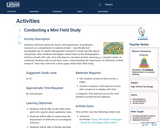
Students will learn about the nature and importance of qualitative research as a complement to numerical data — specifically how sociologists use in-depth ethnographic research to study specific places and groups. After students investigate census data on the demographics of their school’s ZIP code, they will observe a location at their school (e.g., a student center or cafeteria). Students will record their notes, understanding the importance of reflexivity in field research. Then they will write a short paper about their field study.

This 6-minute video lesson looks at 2010 IIT JEE Paper 1 Problem 45 Circle Hyperbola Common Tangent.

This 11-minute video lesson continues to look at 2010 IIT JEE Paper 1 Problem 45 Circle Hyperbola Common Tangent.
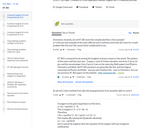
This 9-minute video lesson continues to look at 2010 IIT JEE Paper 1 Problem 45 Circle Hyperbola Common Tangent.

This 11-minute video lesson continues to look at 2010 IIT JEE Paper 1 Problem 45 Circle Hyperbola Common Tangent.

This 12-minute video lesson concludes the look at 2010 IIT JEE Paper 1 Problem 45 Circle Hyperbola Common Tangent.